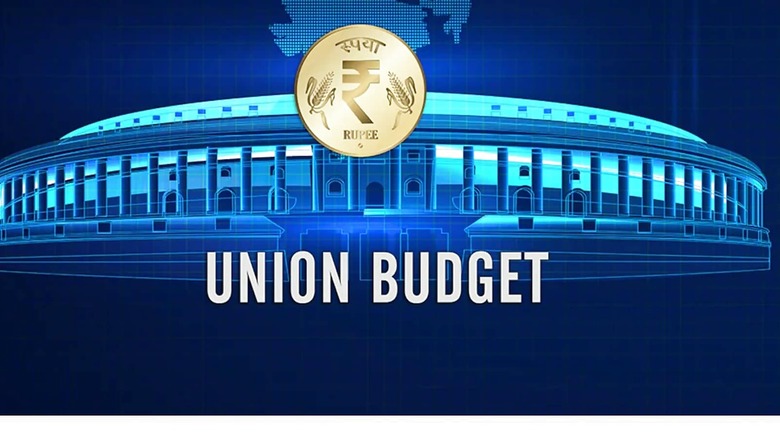
views
Finance Minister Nirmala Sitharaman presented the Union Budget in the Lok Sabha on February 1, 2023. The budget was tabled in Parliament at a time when India’s economic recovery is facing hurdles due to a worsening global slowdown, rising geopolitical tensions, and elevated inflation.
With the introduction of Union Budget 2023, much budget-related jargon is being thrown around, leaving one befuddled and cluelessly searching for word meaning on the internet. In today’s Classes With News18, we will help you to understand the Budget and its related financial terms so that you can have a better understanding of the same.
According to Article 112 of the Indian Constitution, the Union Budget of a year, also referred to as the annual financial statement, is a statement of the estimated receipts and expenditures of the government for that particular year.
Why the government works out a budget every year?
The government works out a budget every year because:
1. The government of India estimates the expected expenditures for developmental works in different sectors of the economy like Industry, Manufacturing, Education, Health, Transport, etc.
2. To meet the expenditures for the coming financial year, the Government tries to work out the sources of revenue. ( that is, by imposing new taxes or increasing or decreasing the previous rates of taxes, or removing or imposing subsidy on any commodity.
In other words, the governments decide about the expenditure to be incurred on which commodities primarily and how the money is going to be arranged for these expenditures. The details of such income and expenditures statements are known as ‘budget’.
Read | Education Budget 2023: Focus on Building Reading Habit, Education Among Tribal Children, Key Takeaways From Union Budget
Types of Budget
Revenue Budget- The approximate amount required for the growth, development, and infrastructure of the country is called revenue budget. The revenue budget includes the government’s revenue receipts and expenditures. There are two kinds of revenue receipts – tax and non-tax revenue. Revenue expenditure is the expenditure incurred on day to day functioning of the government and on various services offered to citizens. If revenue expenditure exceeds revenue receipts, the government incurs a revenue deficit.
Capital Budget- This includes capital receipts and payments of the government. Loans from the public, foreign governments, and RBI form a major part of the government’s capital receipts. Capital expenditure is the expenditure on the development of machinery, equipment, building, health facilities, education, etc. A fiscal deficit is incurred when the government’s total expenditure exceeds its total revenue.
Union Budget 2023 Summary
– Union Budget 2023-24 Presents vision for Amrit Kaal- Blue Print for an empowered and inclusive economy
– Capital investment outlay increased by 33 per cent to Rs 10 lakh crore
– Effective capital expenditure at 4.5 per cent of GDP
– Fiscal deficit estimated to be 5.9 per cent of GDP in BE 2023-24
– Real GDP to grow at 7 per cent in FY2022-23
– Export to grow at 12.5% in FY 2023
– Atmanirbhar Clean Plant Program with an outlay of Rs 2,200 Crore to be launched to boost the availability of quality planting material for high-value horticultural crops.
– 157 new nursing colleges to be established
– Outlay for PM Awas Yojana enhanced by 66 per cent to over Rs 79,000 crore
– Highest ever capital outlay of Rs 2,40 lakh crore provided for railways
– Urban Infrastructure Development Fund (UIDF) to be established through the use of priority sector lending shortfall.
– 500 new ‘Waste to wealth’ plants under the Gobardhan Scheme to be established at a total investment of Rs 10,000 crore.
– 1000 bio-input resource centres to be set up, creating a national-level distributed micro-fertilizer and pesticide manufacturing network.
– Mantri Kaushal Vikas Yojana 4.0 to be launched.
– Union Budget 2023-24 provided substantial relief for personal income tax.
– New slabs announced under the new tax regime
– Resident individuals with a total income up to Rs 7 lakh will not have to pay any income tax under the new tax regime
– Standard deduction of Rs 50,000 will be available to salaried individuals under the new tax regime
– Limit for tax exemption on leave encashment on the retirement of non-government salaried employees increased to Rs 25 lakh.
– Slew of proposals announced for the cooperative sector.
– Indirect tax proposals aim to promote exports, boost domestic manufacturing, enhance domestic value addition, and encourage green energy and mobility.
– The number of basic customs duty rates on goods, other than textiles and agriculture was reduced from 21 to 13.
Important Financial Terms
Economic Survey- The Economic Survey is a flagship document of the finance ministry. It is presented in both houses of Parliament a day before the Union Budget is presented. The Economic Survey provides detailed information about the Indian economy over the past financial year. Along with the current state of the economy, the Economic Survey provides the economic outlook. A team led by the Chief Economic Advisor prepares the document. For common people, the Economic Survey is a useful document to understand the state of economic affairs in India and the impact of the decisions made by the Union government.
Inflation- Inflation, usually expressed in percentages, is a quantitative measure of the rate at which products and services in an economy are increased over a certain period of time. When the price of a certain basket of commodities increases due to internal or external economic factors, it can be termed a rise in inflation. A rise in inflation indicates a decrease in the country’s currency value and purchasing power.
Read | Education Budget 2023: Teacher Training a Welcome Move, More Needs to be Done For Higher Edu, Say Experts
Fiscal Policy- Fiscal policy basically outlines the estimated taxation and government spending and serves as a key instrument to monitor the country’s economic position. The Fiscal policy denotes adjustments in spending levels and tax rates and also refers to the use of government spending and tax policies to influence economic conditions, especially aggregate demand for goods and services, employment, inflation, and economic growth. It goes hand in hand with monetary policy, through which the Reserve Bank of India (RBI) influences the nation’s money supply. In case of an ongoing recession, the government may employ an expansionary fiscal policy by lowering taxes to increase aggregate demand.
Fiscal Deficit- The difference between the government’s total expenditure and its total revenues excluding money generated from borrowings is known as fiscal deficit. It indicates the borrowing requirement of the government during the budget year, where the non-debt capital receipts + recovery of loans + disinvestment proceeds of the government.
Revenue Deficit- The difference between Revenue Expenditure and Revenue Receipt, denoting the shortcoming or ‘deficit’ of the government’s current receipts over current expenditure. In terms of formula, Revenue Deficit + RE-RR, where RE = Revenue Expenditure and RR= Revenue Receipts.
Divestment- Divestment is a process involving the sale of existing assets. It is the opposite of investment. The government has been looking to divest many of its assets which have turned sour over the years.
Capital Expenditure- This refers to funds used by the government in this case — to acquire, maintain or upgrade physical assets such as property, new infrastructural projects, or buying new equipment. Capital expenditure is classified as a long-term expenditure and usually includes expenses incurred by the government towards asset building, including development and infrastructural projects.
Outlay- It is the division of money or resources into different sectors or ministries. Outlay can also be referred to as the basic framework of the Union Budget.
Surplus Budget- The condition when the incomes or receipts overreach the expenditure or outlay.
Tax- It is a legally compulsory payment imposed on the people by the government. Direct taxes include income tax and corporate tax.
Customs Duty- Customs duty is a levy that is charged when certain goods are imported into/exported out of the country. Eventually, these expenses are passed on to the end customer.
To learn about other topics taught in school, explained by News18, here is a list of other Classes With News18: Queries Related to Chapters on Elections | Sex Versus Gender | Cryptocurrencies | Economy & Banks | How to Become President of India | Post Independence Struggle | How India Adopted Its Flag | Formation of States & United India | Tipu Sultan | Indian Teachers Day Different from Rest of the World |Queen Elizabeth & Colonialism | Challenges of Democracy | Print Culture | India and Pakistan Partition |
Read all the Latest Education News here



















Comments
0 comment